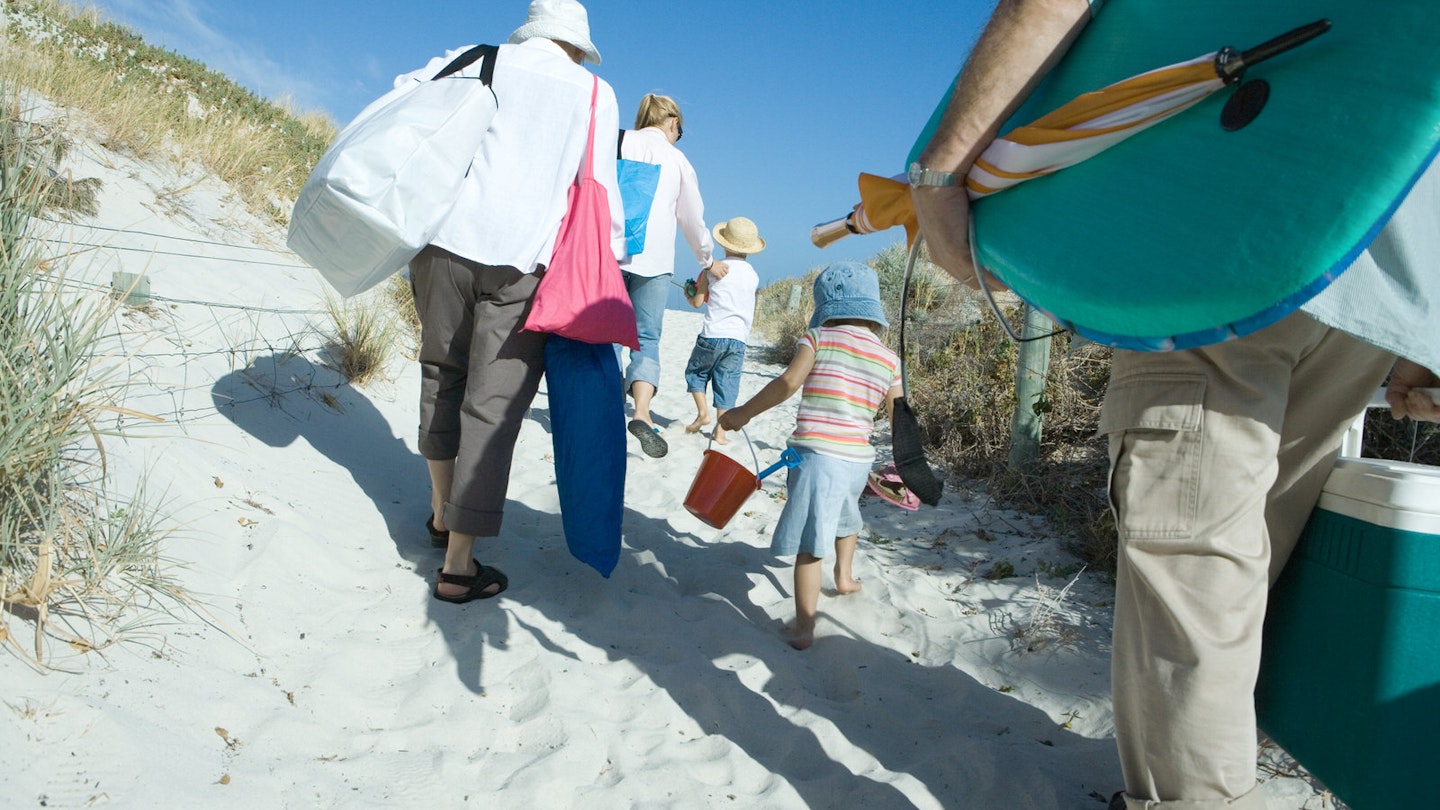It’s easy to imagine that idyllic beach trip – the kids are playing nicely in the sand and the adults are relaxing by the sea. However, as most parents know, the reality is quite different. Sand gets in all the wrong places, toddlers have tantrums, and the weather doesn’t always play along. Nevertheless, all is not lost. Here are our tips for packing effectively for a family beach trip, along with some life hacks on how to cope with the sand once you’re there.
Pre-departure checklist: the essentials
Whatever the ages of your family group – and unless you are visiting a beach on a grey mid-winter’s day – you will need the obvious sunscreen, swimmers, hats, sunglasses, and rash vests, plus these key items:
Home comforts
A massive beach blanket is a must. Consider fold-up chairs, extra towels (to double as cushions), and an umbrella or windbreak to offer some shelter.
Refreshments
Bring plenty of water (freeze some overnight so it keeps cool) and bite-sized snacks that won’t melt. Everyone knows it’s the law to have ice cream at some point during a trip to the beach, so don’t leave your wallet behind.
Clean-up kit
Wipes, tissues, and hand gel are worth bringing on any trip with kids, regardless of their ages. Reusable plastic bags are handy for rubbish, separating wet and sandy clothes, and scooping up everything else. Bring a fresh set of clothes for everyone, and a small tub of baby powder for sand-free feet on the way home.
First-aid pack
Deal with minor scrapes, bumps, and ailments with ease.
Check the forecast, check the tides
Be aware of the elements before you head off. Will you need more sunscreen, or will raincoats and layers be required? Is it safe to swim? When will the tide come in?
Entertainment checklist
Fishing net and jelly shoes/sturdy waterproof sandals for rock pooling
Football or beach paddles for family games
Bucket and spade for digging and building
Bodyboards and snorkel sets for older kids, if the conditions are right
Something to read for the book lovers
Set up a safe, easy-to-find camp
Regular beach-goers go the extra mile when it comes to keeping everyone – and everything – safe and stress-free.
Stand out
Bring a loud and colourful beach flag or umbrella to help lost members of your clan find their way back to camp. Set up near an easily identifiable landmark.
Be heard
Having a whistle or other noise-making tool, which family members recognise, is also a good way to keep people together. Binoculars for scanning the horizon for wandering children, as well as sea life, can be handy.
Chain up your keys!
Don’t lose the car keys or a wallet to the sandy depths or worse – to a pick-pocket. Use key-chains to keep things secure, hidden, and easy to find.
Lifehacks for sand tolerance
Some kids don’t even notice the grit in their sandwiches, while others find it a constant irritation – which then becomes your constant irritation. Here are some lifehacks for beach-living.
Create a sand-free zone
Introduce a ‘no-sand’ zone to your beach camp. Hooks that attach to beach umbrellas or clamps to secure towels in place can work wonders at keeping sand at bay.
Avoid sandy sandwiches
A resealable portable cooler keeps lunch safely in the no-sand zone. Packing food in small containers ensures that if you lose the contents of one to the sand gods, it doesn’t ruin your entire meal.
Don’t take the beach home with you
You could buy some sand-removal mitts before you go, or keep it simple with some baby powder; it soaks up moisture, leaving dry sand that’s easier to brush off. Mesh bags are perfect for toy storage so the sand can drop straight through.
Travel backwards with a pram
Unless you have an all-terrain pram, chances are you’ll struggle to push it on a sandy beach. Turn it round and drag it backwards, and you might make a bit more progress.
Know what to leave at home
No one wants tears at the end of a day at the beach. Consider leaving these items behind:
Expensive tech
Sand and water aren’t kind to cameras, smartphones, or tablets. Can’t leave the screens at home? Invest in waterproof cases, keep them in a zip-lock bag, and stow them safely with other valuables.
Cherished toys
Sure, you can wash a favourite toy if it gets wet or sandy, but things get a bit trickier if the toy is carried out to sea or buried in an unmarked sandy grave. It happens.
Article first published April 2018, and updated June 2019.





